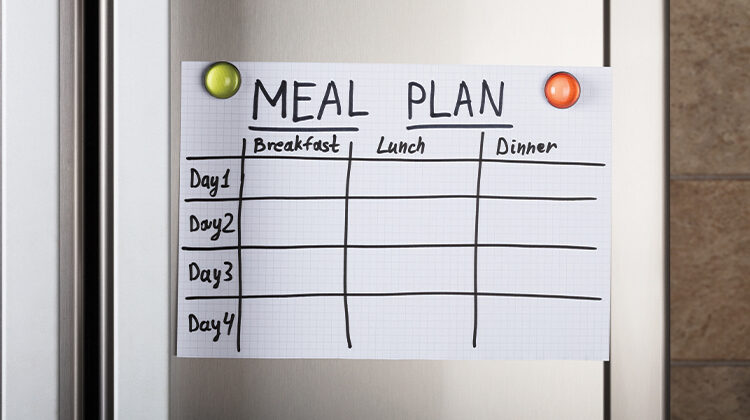A big part of ensuring your family has a successful future is conquering the everyday battles. It’s hard to plan your family’s long-term goals when you are worried about what to make for dinner tonight, how the house will ever get clean or solving the puzzle of how to get each kid to their extracurricular activities.
Here are three strategies to help you tackle your everyday obstacles so that you can start setting your family up for big picture wins.
Mastering the Meal Plan
Start small
If you’re a meal planning newbie, don’t bite off more than you can chew. Start by planning two meals a week and work yourself up to three, then four. Once you get the hang of it and find the system that’s right for you, you can progress to whatever is the best fit for your family.
Map out your menu
This may seem really basic, but putting pen to paper makes all the difference when it comes to implementing a plan. It doesn’t matter whether you use the notes section of your smartphone, a blank notebook or pad of paper, or a pre-designed meal planning pad from Amazon. Use a combination of TikTok, Pinterest, social media posts from friends or wherever to start adding to your menu. And if that doesn’t work for you, find an app that will help you plan out your menu. I’ve used eMeals before and loved it!
Get a grocery game plan
Once you have your menu set, make your grocery list to go along with it. Keep your grocery list on your phone and organize it based on the layout of your favorite store. For those that opt for curbside pickup, keep track of your grocery list by adding things to your cart as you need them. Making a list also helps avoid those impulse buys just because something looks good or is on sale.
Cook in bulk
One of the benefits of thinking ahead and planning your meals is that you can make extra of a recipe, so you have enough for leftovers another night or to freeze for a busy week. The little bit of extra time it takes on that day of cooking is more than made up for when you have a defrosted meal on the table in no time.
Take a night off
You don’t have to meal plan for every night. Give yourself some grace and understand that it’s OK to take a night off and treat yourself to your favorite restaurant.
Creating a Command Center
It can be hard enough to keep track of your own schedule and belongings, much less those of everyone else in your family. If you’re having trouble with both mental and physical clutter, you might want to consider setting up a family command center. The following family command center ideas can help you reclaim some sanity and start the year off organized.
A clock
A family calendar or schedule
Key rings
A chalkboard or dry erase board
for leaving notes and reminders
Hanging wall files for mail, bills or
important paperwork
Wall files to hold kids’ permission
slips, workbooks or homework
assignments
Clipboards or a magnetized area
where kids can show off artwork,
good test grades and school photos
(limit this to one item per kid to
avoid clutter)
Shoe rack or bins
Hooks for coats, scarves or
backpacks
A chore checklist
A binder filled with coupons
A space for your meal plan
The school lunch menu
A Cleaning Schedule You’ll Actually Stick To
Cleaning your home doesn’t have to be a daunting, time-consuming chore. The key to managing household duties quickly and efficiently is to design an easy-to-follow routine that includes all the most important tasks. Follow these step-by-step instructions for creating a customized whole-home cleaning schedule.
STEP 1:
Before you can write a realistic cleaning schedule for your home, you need to know what you have to do to clean it in the first place. It sounds obvious – but most of us haven’t ever sat and thought about all the jobs that need doing – we are much more reactive and get what needs doing done when we have time. The trouble with this is that things can easily get missed, and you can feel stressed because it never feels finished. Go around your home and for each room write down everything that in an ideal world you would clean. Also write how often you would want to clean it ideally.
STEP 2:
Group the jobs into how often they need to be done – grouping by frequency makes sense for cleaning because then you can allocate time for them much more easily. This will give you a much better idea of what you will need to do each day/week/month/season.
STEP 3:
Evaluate your time and make a schedule. We always overestimate what we can get done in a set amount of time, which can so easily lead to disappointment – so really think carefully about all aspects of your life when looking at what time you have available. In your mind, work through your typical weekly schedule, and start to allocate the jobs from your list onto specific days.

